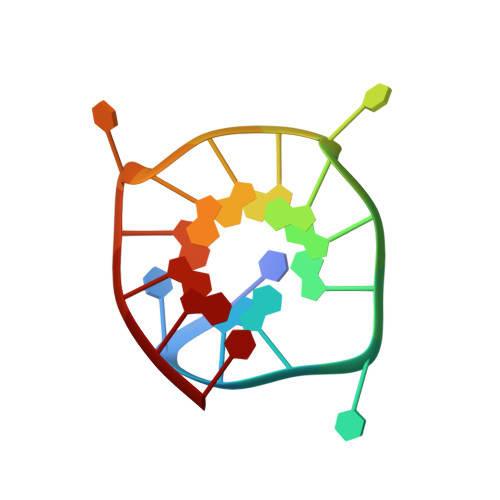Solution Structures of a G-Quadruplex Bound to Linear- and Cyclic-Dinucleotides.
Winnerdy, F.R., Das, P., Heddi, B., Phan, A.T.(2019) J Am Chem Soc 141: 18038-18047
- PubMed: 31661272
- DOI: https://doi.org/10.1021/jacs.9b05642
- Primary Citation of Related Structures:
6K3X, 6K3Y - PubMed Abstract:
Cyclic dinucleotides have emerged as important secondary messengers and cell signaling molecules that regulate several cell responses. A guanine-deficit G-quadruplex structure formation by a sequence containing (4 n - 1) guanines, n denoting the number of G-tetrad layers, was previously reported. Here, a (4 n - 1) G-quadruplex structure is shown to be capable of binding guanine-containing dinucleotides in micromolar affinity. The guanine base of the dinucleotides interacts with a vacant G-triad, forming four additional Hoogsteen hydrogen bonds to complete a G-tetrad. Solution structures of two complexes, both comprised of a (4 n - 1) G-quadruplex structure, one bound to a linear dinucleotide (d(AG)) and the other to a cyclic dinucleotide (cGAMP), are solved using NMR spectroscopy. The latter suggests sufficiently strong interaction between the guanine base of the dinucleotide and the vacant G-triad, which acts as an anchor point of binding. The binding interfaces from the two solution structures provide useful information for specific ligand design. The results also infer that other guanine-containing metabolites of a similar size have the capability of binding G-quadruplexes, potentially affecting the expression of the metabolites and functionality of the bound G-quadruplexes.
Organizational Affiliation:
School of Physical and Mathematical Sciences , Nanyang Technological University , Singapore 637371 , Singapore.















